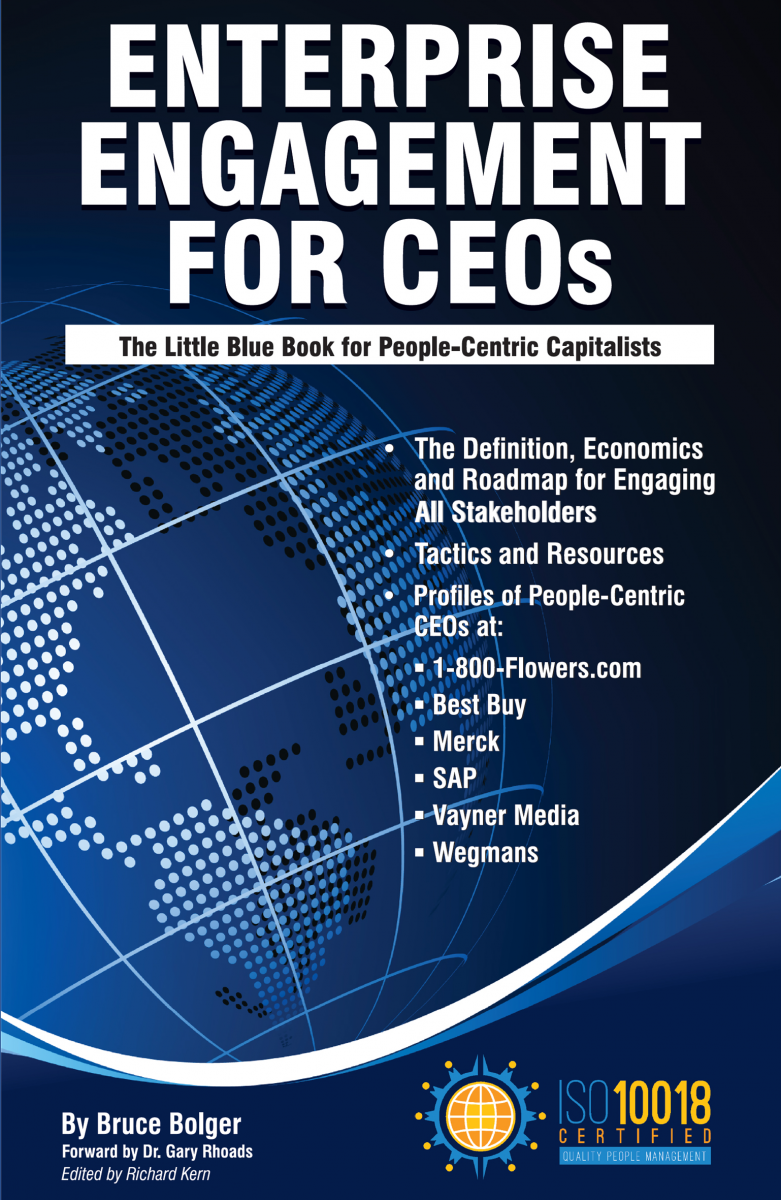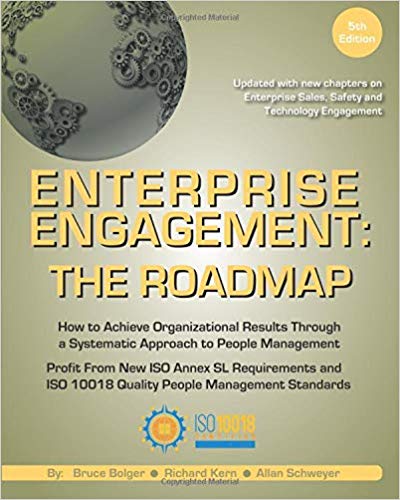Stay Metrics—At the Front Lines of Turnover
As a retention advisory firm serving the trucking industry, Stay Metrics has faced almost any retention and recruiting challenge imaginable. A highly cyclical business, with recurring shortages and gluts of drivers, the trucking industry faces long-term demographic challenges that, along with a new generation of management, is opening the doors for a more strategic and systematic approach to managing retention and recruitment across all demographic groups.
 Tim Hindes
Tim Hindes, CEO and founder of Stay Metrics, grew up in the trucking field, first as a driver, then a dispatcher, and later in sales and recruiting. Seeing the perennial stress on carriers to recruit and retain truckers, he left to start his advisory firm 10 years ago to focus on helping carriers with retention and recruitment. He recently sold his company to
Tenstreet, a leading trucking company software company, and remains on as the president of Stay Metrics.
Hindes believes that the same forces leading the world’s largest companies to adopt a more business-like approach to people management have come to the trucking industry. He anticipates a greater focus on culture, rewards, and diversity inclusion as more owners recognize the benefits of trucker retention and engagement.
A Shift to a Greater Focus on People

According to Hindes, the trucking industry, like most, has ownership that value people and others that do not. Some companies, he says, have used the owner-operator business model to the advantage of truckers, and others to their disadvantage. As a result of some arrangements unfavorable to truckers, there has been a shift in the industry towards the traditional employment model, he says. Both models can work when implemented by well-meaning companies, he adds, so whatever the formula, the key to trucker engagement and retention is a strong culture that values not only the truckers but their families. “We work with one company that offers generous benefits including paid vacation. This approach makes people want to stay and work with greater dedication, and the company benefits in terms of a better bottom line because that dedication shows up in reliability, safety, and retention.” The company, whose name he says he is not authorized to disclose, has consistently outperformed its competition in terms of sales and profits.
Hindes says that “Rewards are very effective with truckers. We recommend a budget of at least $500 a year in rewards per trucker, used to recognize specific important behaviors based on each organization’s brand, culture, and needs. Tangible rewards have trophy value in the home,” especially because truckers are often away at least a week at a time.
Says Hindes, “There’s no secret to why and how to engage truckers to stay longer. Motivated truckers not only recommend your company to other truckers,” he points out. “They can identify sales opportunities while talking to people on the loading dock or make useful suggestions on how to solve a problem or improve performance. Treat them with respect. Demonstrate that you care in tangible ways. Listen and act on constructive feedback. Share information about your organization’s performance, give them a sense of mission. They want to hear about a big sale or even a challenge, because they want to feel part of the team.”
He adds, “Truckers are hard-working people who are used to being treated without respect, so when they come upon a company that sincerely cares about them by listening and acting upon their suggestions and providing rewards, they stay longer and work with more commitment. Customers notice the difference when truckers are committed in terms of reliability and communication.” And that can make a difference in the highly competitive trucking market, he adds.
Engagement Starts on Day One
One key to driver engagement, he notes, is to start focusing on each recruit the day he or she joins. “Drivers are most fragile in first 90 days. So, how do you manage that first 90 days? It’s important to conduct a survey in the first 10 days, then 45 days. Some companies have management make personal calls. With our surveys, we can predict whom you’d better call first. We see higher levels of success when senior management calls a trucker within the first 90 days with the message, ‘we appreciate that you have a choice, etc.’” He adds, “If you want to retain drivers, think of them as customers, and market to them as if they are customers. Learn their demographics, learn what they want, and cater to that. Your recruiters should look like the people you are trying to recruit.”
Historically, Hindes says, “The trucking industry has not embraced total rewards. Traditionally, for many, the question was, how much costs can I push off to the driver, truck payments, insurance, etc.? Let me deal with the independent owner operator, they would say. That was the sexiest model. Now the company driver arrangement is becoming more desirable because people want reliable pay and rewards.”
Hindes says companies that focus on driver satisfaction can contribute to ongoing profitability. The big challenge, Hindes says, is that owners often fail to measure the true cost of turnover in terms of service disruptions, replacement costs, or poor customer service. “Many say they can’t measure the financial costs or benefits of turnover or more specifically pinpoint what actions lead to greater retention.” Given the cycles in the industry, Hindes admits, it is difficult for some owners to understand that a continued investment in trucker retention and engagement can affect the bottom line. He believes this will change as a new generation of management comes up through the ranks with a more “millennial” frame of mind. The increased use of human capital analytics also can help organizations more clearly measure the true cost of turnover and absenteeism, he notes.
Complicating people management, Hindes adds, is the effect of deregulation. “With so many pricing changes, and so much competition, even long-term contracts are of little meaning when prices swing the wrong way.” Under such circumstances, he says, it is easy to understand why a short-sighted carrier would see the benefit of keeping costs close to the bone. Most companies do not have a level of analytics enabling them to see the true cost of these decisions on productivity, quality, safety, or customer loyalty, he says. “If a carrier doesn’t build up a high level of loyalty, it’s easy to lose business even with those contracts.”
Coming: A Change in Mentality
Ten years ago, he explains, “running a trucking firm was like managing a manufacturing plant in the 1950s. I give you a job. You get your wage. That attitude bit the industry in the butt. Drivers would think, ‘If you don’t care about me, why should I care about you?’” Today, he says, the climate has changed because many firms have experienced trucker shortages and felt the direct impact on sales and profits. Covid-19 may worsen the shortage because more truckers are retiring and the driver training schools can’t produce as many graduates as needed because of social distancing protocols.
With driverless trucking still on the drawing boards, Hindes believes that the trucking industry must once and for all address the issue of diversity inclusion. “The population of young farmers or other rural white people from which the industry traditionally drew most of its drivers aren’t there anymore, while the percentage of available African Americans, Latin Americans and immigrants from Asia are on the rise. He believes that having an active diversity inclusion strategy will be critical to finding a sustainable source of talent, especially considering that whites are expected to be in a minority in the US by the mid-2040s. “If that’s the inevitable future, best deal with it now,” advises Hindes.
As to how to improve diversity. “No one has ever told me not to hire any particular type of person, but when I was recruited by white people, entertained in a restaurant with mostly whites, when all the recruiters were white and recruiting from white communities, the result was inevitable,” he explains. To successfully recruit people from different communities, he says, “you have to employ people from those communities. This can make all the difference.” He adds, “If truckers visit a facility and no one in the dispatch window comes from their communities, they might wonder how well they’re going to do when it comes to getting jobs.”
Benefiting from diversity, Hindes says, is particularly important because of the nature of the trucker’s job. “While the average time away from home has dropped from over three weeks to around one week a month, that’s still a lot of time away. There’s a certain percentage of people who don’t mind that for various reasons, or who like the life of the open road and don’t mind being alone,” but that audience isn’t growing, he says. It makes sense to seek out those with the right personality for the profession from as broad a community as possible, he advises.
For More Information
Tim Hindes, CEO
Stay Metrics
tim@staymetrics.com
Master the Principles of Stakeholder Capitalism And Implementation Through Enterprise Engagement
Education, Certifications, and Information to Activate
Stakeholder Capitalism Available Nowhere Else
A complete learning, certification, and information program and a course syllabus for educators.
Training and Certification
Enterprise Engagement Alliance Education: Certified Engagement Practitioner; Advanced Engaged Practitioner, and Certified Engagement Solution Provider learning and certification programs on how to implement Stakeholder Capitalism principles at the tactical level.

Join the EEA to begin your certification process or see our other resources below.
THE ONLY BOOKS ON STAKEHOLDER CAPITALISM IMPLEMENTATION

Enterprise Engagement: The Roadmap 5th Edition
The first and most comprehensive book on Enterprise Engagement and the new ISO 9001 and ISO 10018 quality people management standards. Includes 36 chapters detailing how to better integrate and align engagement efforts across the enterprise. (312 pages, $36.)
OTHER RESOURCES TO ACTUALIZE STAKEHOLDER CAPITALISM
Communities: The Enterprise Engagement Alliance and Advocate and the Brand Media Coalition free resource centers offering access to the latest research, news, and case studies; discounts, promotions, referrals, and commissions, when appropriate to third-party solution providers from participating coalition solution provider members.
Enterprise Engagement Resources: EEXAdvisors.com provides the only curated online marketplace to access hundreds of solution providers in all areas of human capital management and enterprise engagement throughout the world.
Online Overview:
10-minute short course: click here for a 10-minute introduction to Enterprise Engagement and ISO standards from the Coggno.com learning platform.
Services:
• The Engagement Agency at EngagementAgency.net, offering: complete support services for employers, solution providers, and technology firms seeking to profit from formal engagement practices for themselves or their clients, including Brand and Capability audits for solution providers to make sure their products and services are up to date.
• C-Suite Advisory Service—Education of boards, investors, and C-suite executives on the economics, framework, and implementation processes of Enterprise Engagement.
• Speakers Bureau—Select the right speaker on any aspect of engagement for your next event.
• Mergers and Acquisitions. The Engagement Agency’s Mergers and Acquisition group is aware of multiple companies seeking to purchase firms in the engagement field. Contact Michael Mazer in confidence if your company is potentially for sale at 303-320-3777.
Enterprise Engagement Benchmark Tools: The Enterprise Engagement Alliance offers three tools to help organizations profit from Engagement. Click here to access the tools.
• ROI of Engagement Calculator. Use this tool to determine the potential return-on-investment of an engagement strategy.
• EE Benchmark Indicator. Confidentially benchmark your organization’s Enterprise Engagement practices against organizations and best practices.
• Compare Your Company’s Level of Engagement. Quickly compare your organization’s level of engagement to those of others based on the same criteria as the EEA’s Engaged Company Stock Index.
• Gauge Your Personal Level of Engagement. This survey, donated by Horsepower, enables individuals to gauge their own personal levels of engagement.
For more information, contact Bruce Bolger at Bolger@TheEEA.org, 914-591-7600, ext. 230.
 Tim Hindes, CEO and founder of Stay Metrics, grew up in the trucking field, first as a driver, then a dispatcher, and later in sales and recruiting. Seeing the perennial stress on carriers to recruit and retain truckers, he left to start his advisory firm 10 years ago to focus on helping carriers with retention and recruitment. He recently sold his company to Tenstreet, a leading trucking company software company, and remains on as the president of Stay Metrics.
Tim Hindes, CEO and founder of Stay Metrics, grew up in the trucking field, first as a driver, then a dispatcher, and later in sales and recruiting. Seeing the perennial stress on carriers to recruit and retain truckers, he left to start his advisory firm 10 years ago to focus on helping carriers with retention and recruitment. He recently sold his company to Tenstreet, a leading trucking company software company, and remains on as the president of Stay Metrics. 


 ESM News Alert for the latest news. Subscribe here.
ESM News Alert for the latest news. Subscribe here.
